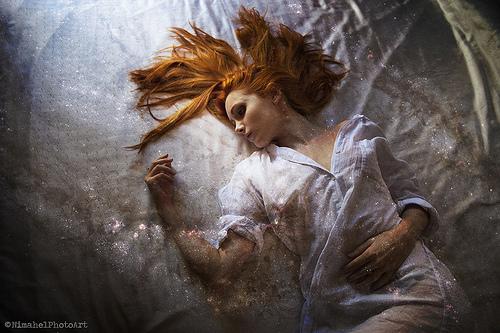Have you ever imagined waking up at night and feeling paralyzed?Your body is completely motionless, you feel pressure on your chest and, worse, you swear that someone or something is wrong and wrong with you. Does that sound like a horror movie? But the truth is, it happens to those with sleep paralysis.
It is a disorder that causes the person to experience normal phases of sleep outside the natural order. Basically, and in simpler terms, your mind wakes up before your body.
- Usually.
- When you go to sleep.
- You fall asleep or lose consciousness.
- So to speak.
- Then the chemicals in your brain make your body paralyze.
- You start dreaming and as you run.
- Play or dance in your dreams.
- These Chemists force you to stay in bed.
- When dawn begins.
- You stop dreaming and start regaining your body’s mobility.
- I mean.
- You wake up.
Now imagine that this process takes place in a mess. What if your brain continues to produce glycine and GABA (two chemicals that cause paralysis in your body) even after you wake up?You’d wake up before you regained your body’s mobility. If some remnants of your dream were mixed with your state of consciousness, this combination is able to produce a truly terrifying experience.
Being paralyzed leaves the person helpless. He can’t ask for help, or satisfy the normal instinct to protect himself. When someone is in such a vulnerable state, their greatest fears may take hold of (or them).
Therefore, it is understandable that the person thinks, “If I do not control my body, who controls. “Many people suffering from sleep paralysis concluded that evil force was harassing them. These ideas are influenced by religious and cultural reasons. beliefs Depending on the context, the person comes to think that he is being harassed by spirits, aliens, demons or other mystical creatures.
But no matter how each person explains the experience, the truth is that some common symptoms are shortness of breath, chest pressure, lack of body mobility, and the ability to perceive clear details about what surrounds them, such as the bedside, the head of the bed. table, alarm clock, etc. In almost all cases, episodes tend to occur when the person is lying on their back, face down.
Regular exercise every day will contribute to a quieter sleep at night and will also help you take a break from your job, at least once or twice a day, closing your eyes, relaxing and breathing deeply.
Another tip is to avoid excess caffeine and try to walk outside for at least 30 minutes in the afternoon. And another very important thing: strive to maintain a regular schedule to get enough sleep each night.
Some people have performed well by concentrating on the movement of a small muscle, such as a finger or neck, and so, in essence, they can awaken their bodies. Others focus on breathing quietly until the body regains its activity; In any case, it’s about staying calm and seeing what’s happening to you through the eyes of logic.
Carla MacKinnon, who has been suffering from this disorder since childhood and has done extensive research on the subject, said: “I realized that by focusing on the details of the experience and comparing them to my studies, I could distract my mind from the feeling of fear and threat. So do I eliminate the overwhelming dark force these experiences had before?
Has something like this ever happened to you? Rest assured that you are not alone and you can even combat this terrifying mess.
Image courtesy of Gabriele Negri
Carla MacKinnon coordinates The Sleep Paralysis Project and has developed a short film about sleep paralysis, titled?Devil in the Room? (or Demon in the Room, in free translation), which ended in May 2013. This film combines techniques such as stop motion animation, live action and projection mapping to evoke and explore the worlds lived between awakening and sleep. Carla MacKinnon’s master’s thesis for master’s degree in animation at the Royal College of Art, created in collaboration with Seeper Studios’ artistic and technological resources.
Text by: Claudio Navarro

